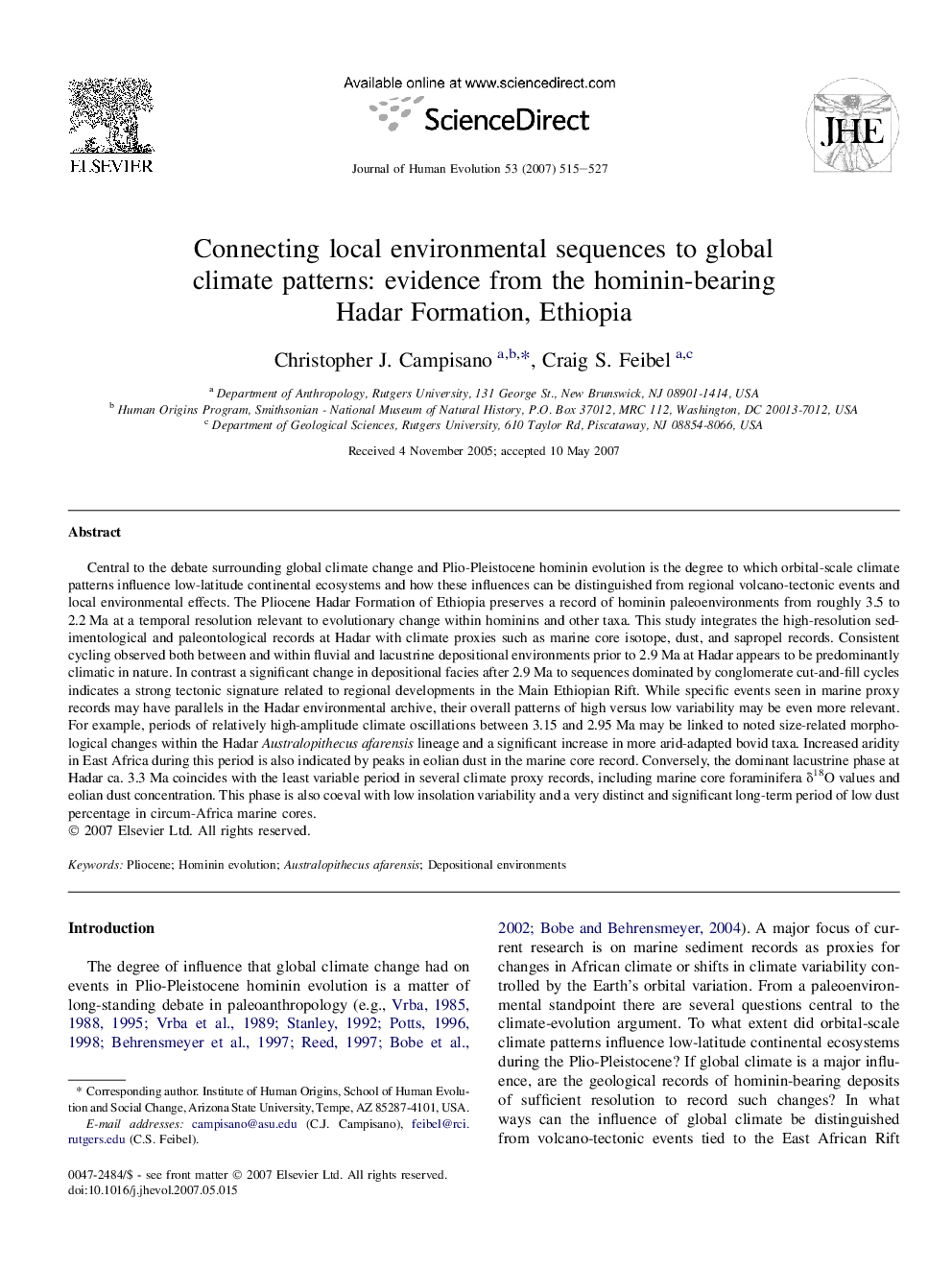| Article ID | Journal | Published Year | Pages | File Type |
|---|---|---|---|---|
| 4557194 | Journal of Human Evolution | 2007 | 13 Pages |
Central to the debate surrounding global climate change and Plio-Pleistocene hominin evolution is the degree to which orbital-scale climate patterns influence low-latitude continental ecosystems and how these influences can be distinguished from regional volcano-tectonic events and local environmental effects. The Pliocene Hadar Formation of Ethiopia preserves a record of hominin paleoenvironments from roughly 3.5 to 2.2 Ma at a temporal resolution relevant to evolutionary change within hominins and other taxa. This study integrates the high-resolution sedimentological and paleontological records at Hadar with climate proxies such as marine core isotope, dust, and sapropel records. Consistent cycling observed both between and within fluvial and lacustrine depositional environments prior to 2.9 Ma at Hadar appears to be predominantly climatic in nature. In contrast a significant change in depositional facies after 2.9 Ma to sequences dominated by conglomerate cut-and-fill cycles indicates a strong tectonic signature related to regional developments in the Main Ethiopian Rift. While specific events seen in marine proxy records may have parallels in the Hadar environmental archive, their overall patterns of high versus low variability may be even more relevant. For example, periods of relatively high-amplitude climate oscillations between 3.15 and 2.95 Ma may be linked to noted size-related morphological changes within the Hadar Australopithecus afarensis lineage and a significant increase in more arid-adapted bovid taxa. Increased aridity in East Africa during this period is also indicated by peaks in eolian dust in the marine core record. Conversely, the dominant lacustrine phase at Hadar ca. 3.3 Ma coincides with the least variable period in several climate proxy records, including marine core foraminifera δ18O values and eolian dust concentration. This phase is also coeval with low insolation variability and a very distinct and significant long-term period of low dust percentage in circum-Africa marine cores.
